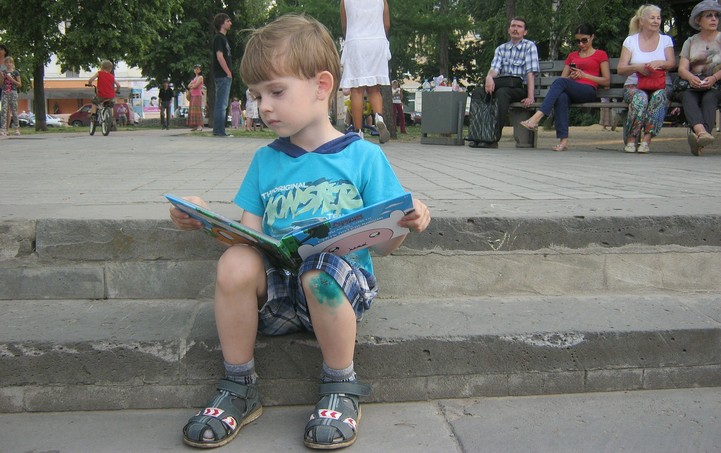
Learning how to read doesn’t happen overnight. It is a lifelong process that begins at birth when children are immersed in literacy. Child care providers and parents play an important role in supporting children’s literacy, simply by reading to children.
Signs of Emergent Reading
Emergent literacy refers to the ways that children learn about books and print text through everyday activities. Emergent literacy signs aren’t hard to identify. As a child care provider, have you ever noticed preschoolers beginning to memorize the stories they grew up hearing, and filling in words at certain times? When reading Brown Bear, Brown Bear, What Do You See to a group of preschoolers, you may notice that they fill in repeated phrases such as “looking at me.” Sometimes young children may appear to be reading a book because they know all the words and when to turn the page, and even stop you if you skip a word, paragraph, or page. They know you missed something and sometimes can even tell you what you skipped, but it’s not necessarily because they were reading along. They had it memorized, and the story just doesn’t make sense based on what they remember. Although these skills are not actually “reading,” they are important foundations that will help children read later on.
Another sign of emergent reading is storytelling based on the pictures in a book. Storytelling is how children practice for the later task of learning to read. This shows that children can interpret pictures, know that they are meaningful, and can create an organized story around the photos. All of these are very important precursors to what we define as “reading” – being able to pick up a book they’ve never seen before and read it. Some children may begin reading in preschool or kindergarten, while others aren’t developmentally ready to read on their own until they’re 7 or 8.
Video: Emergent Reading in Action
Watch the following eXtension Alliance for Better Child Care video to see two emergent readers practicing their literacy skills. Notice that this child is “reading” her favorite book to her friend, but she’s telling her what happens based on the pictures, what she recalls from the story being read to her, and her own experience, not what’s actually written. This is called pretend reading, or emergent reading.
Supporting Emergent Literacy in Child Care
Here are some ways you can help support and encourage emergent literacy in a child care setting:
- Read to children regularly, both in large groups and individually.
- Display books where children can reach them, and rotate books regularly to engage children’s imaginations.
- Point to words and pictures as you read to children. This helps them begin to understand that words have meaning.
- Occasionally follow words with your finger to show children that we read from left to right and top to bottom.
- Read all the parts of a book to children. Make sure you read the cover page, authors/illustrators, and even dedications. It is important for them to know what the illustrator does, what the author does, and what a dedication is.
- Label everyday items in your classroom (for example, table, chair, desk, pencil). This helps familiarize them with words.
- Encourage children to “pretend” to read to you.
- Invite children to help you read a story, and read favorite stories over and over. Repetition is key.
For More Information
To learn more about reading and literacy in child care, take a look at the following eXtension Alliance for Better Child Care articles:
- Choosing Books for Young Children
- Hands-On Activities for Child Care
- How to Read with Children in Child Care
- Story-Stretching Ideas for Child Care
- Ways to Get Children in Your Child Care Program Ready for Reading
For more videos related to quality child care, check out the Better Child Care channel on YouTube.
